Many discussions of the lift on a wing appeal to the Bernoulli principle. It is said that the air going over the top of the wing must go farther than the air going under the wing and to get to the trailing edge in the same time it must go faster. We are told that according to the Bernoulli principle, where the velocity is high, the pressure is low. The higher pressure underneath and the lower pressure above produces the lift on the wing. Actually Bernoulli’s principle has absolutely nothing whatsoever to do with the lift on a wing. It is based on assumptions which directly contradict the possibility of flight.
D’Alembert’s Proof
In the pioneer years of aviation, journalists would ask experts, physicists with PhD degrees and Nobel Prizes in physics, what they thought about flying machines and the universal response was something to the effect that “Mechanical flight is physically and mathematically impossible.” There is a mathematical proof, based on the Bernoulli principle, that a body moving through an ideal fluid would experience no resultant force. The Bernoulli principle is part of the classical theory of ideal fluids which is based on rational, logical postulates which are wrong when applied to real air. The ideal fluid is postulated to be continuous and frictionless. Air has very different properties than those postulated for the ideal fluid. The Bernoulli principle makes the rational assumption that energy is conserved in a moving fluid. For a force to exist on a moving object requires a transfer of energy, energy is not conserved in the fluid. The Bernoulli ideal fluid is continuous and frictionless. D’Alembert showed in 1752 that no such force could exist in the ideal fluid.
Circulation Theory
Prandtl proposed the circulation theory of flow around a wing, following observations by Rayleigh, Lanchester and Montgomery. This provided a theory that was in agreement with observation at least for small angles of attack. It gave no explanation of how the circulation came into being or what determined its strength. (L. Prandtl and O. G. Tietgens, Applied Hydro- and Aeromechanics, Dover Publications, New York, 1934, 1957. Chapter VI, Airfoil Theory.) The pattern of flow around a wing and the resulting forces derive from the molecular nature of real fluids. Real fluids are made of molecules that jiggle around at random with what is known as Brownian motion. This random jiggling permits transfer of momentum within a fluid. It creates the shearing forces that create circulation. It is the physical condition of the forces around the sharp trailing edge that determine the Kutta condition that defines the circulation strength that produces lift. (L. Prandtl and O. G. Tietgens, Applied Hydro- and Aeromechanics, Dover Publications, New York, 1934, 1957. Fig. 42-55, pages 296-301.)
False Assumptions
The usual discussion contains a misstatement and misapplication of the Bernoulli principle. The principle applies to two cross sections of a single fluid stream in steady flow. It says the total energy will be the same at both cross sections. It is not valid to compare two different fluid flow streams or a moving stream with ambient static air. The assumption that “the oncoming airflow traveling over the upper surface has a greater distance to travel in the same amount of time than the lower air flow, so it travels faster” is simply not true, there is no basis for this statement other than ignorant assumption. In fact, as has been observed in wind tunnels, the two particles of air that separate at the leading edge do not arrive at the trailing edge at the same time. By the time the lower particle arrives at the trailing edge, the upper particle may have gone another 50% of the wing chord farther, as Dr. Lippisch shows in the linke video at 22:40-23:29.
False Conclusions
Also, if you attempt to apply this form of the Bernoulli principle, you will get an absurd result. Applying the transit time/velocity calculation to the Clark Y airfoil tells us that the Spirit of St.Louis could not have got airborne at anything like the speeds it flew. This is an exercise anybody can do, at home or in a classroom.
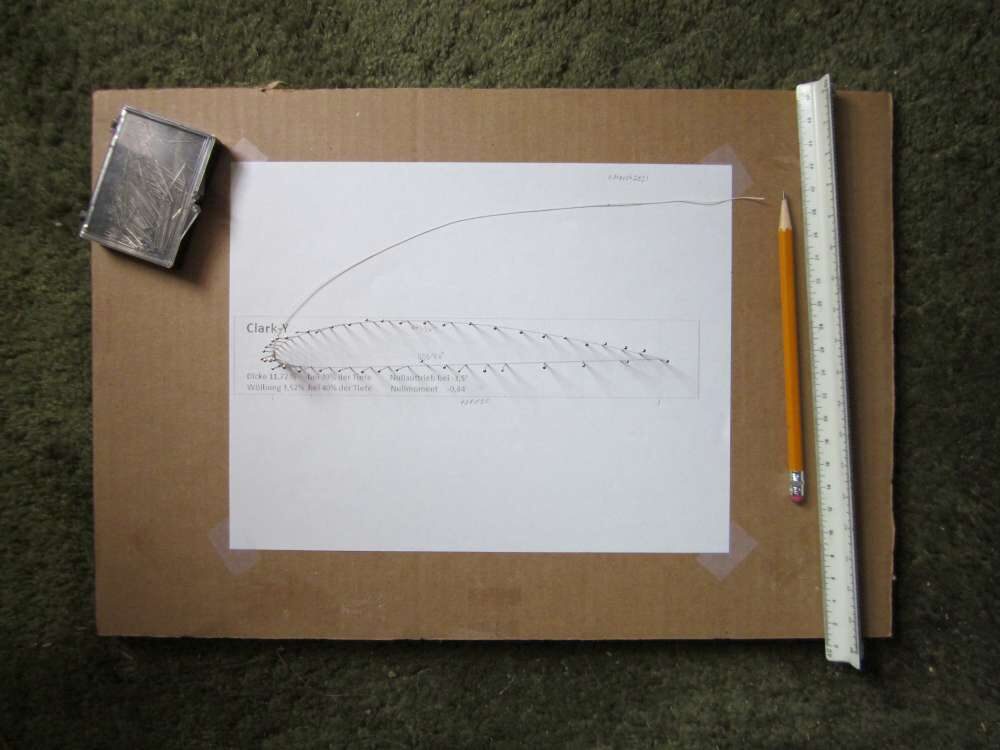
I printed a profile drawing of the Clark Y airfoil and taped it to a building board. I stuck pins along the curves, closer together in the more tightly curved areas, so the curve was sensibly straight between pins. I tied an 8 knot in some Dacron fishing line and stuck the pin from the leading edge through the knot.
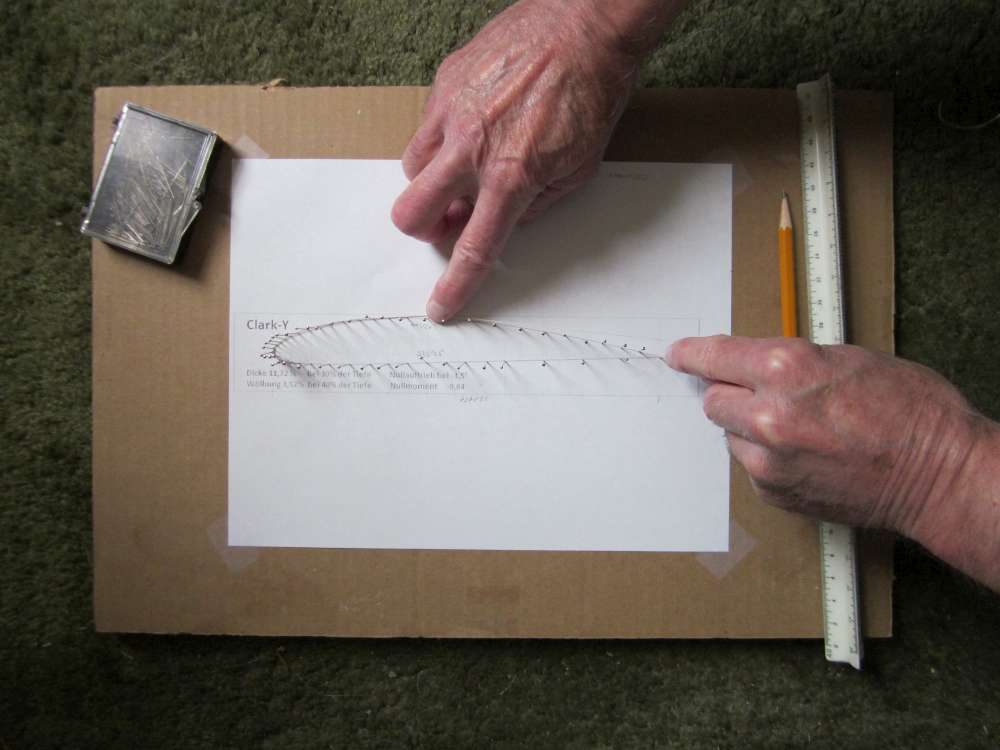
I pulled the line tightly against the pins along the upper curve.
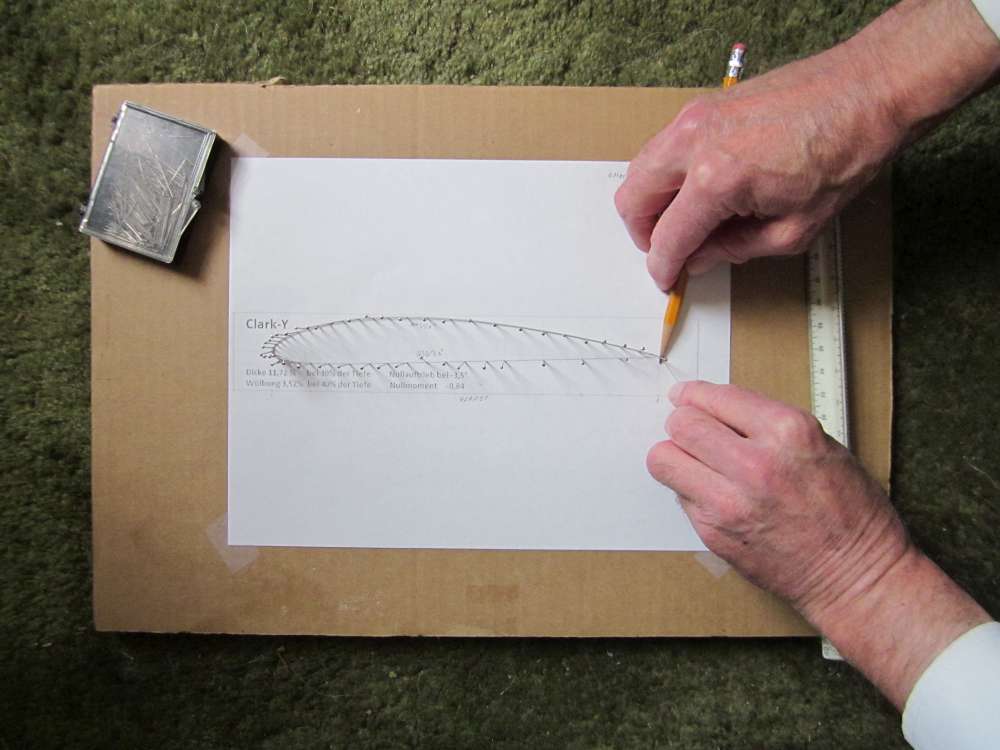
I pulled the line tightly against the trailing edge pin and marked the location with a pencil.
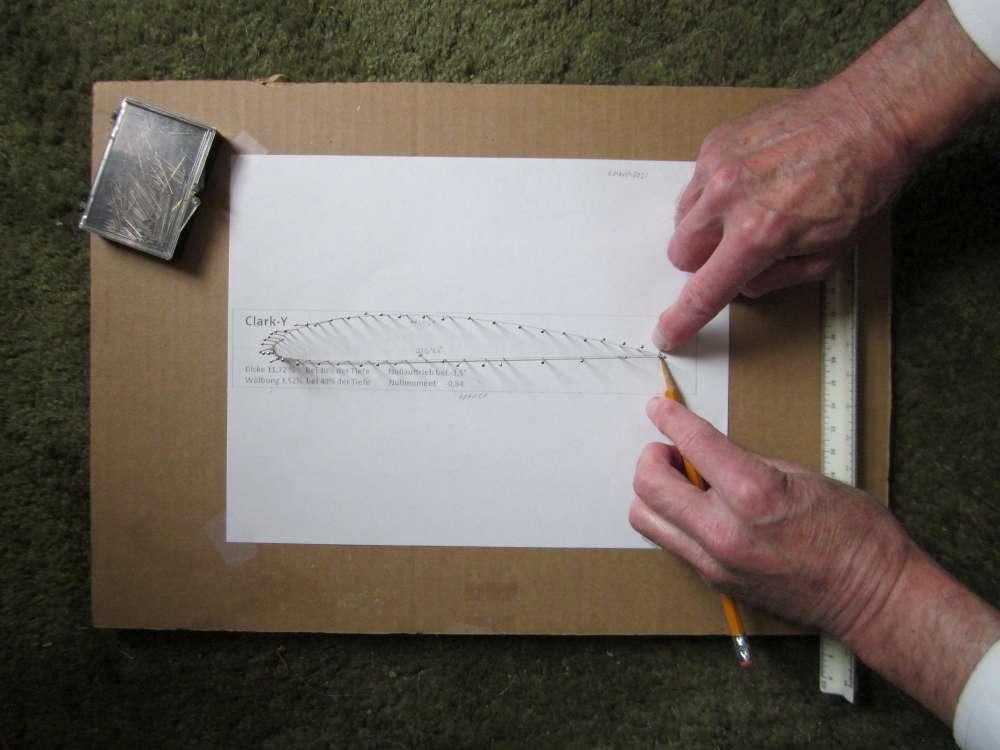
I pulled the line along the lower curve and marked the position of the trailing edge.
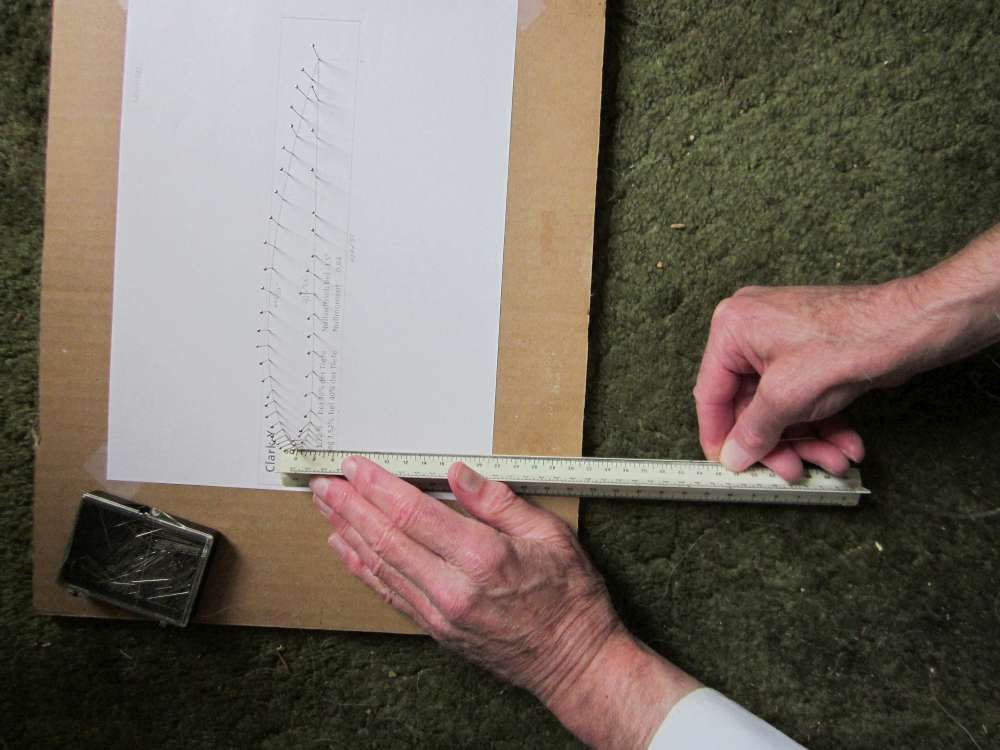
I measured the distance from the knot to the two pencil marks. The distance over the top was 8.82″ and the distance along the bottom was 8.60″. If you have a model airplane wing, you can do something similar with a strip of paper.
This misapplication of the Bernoulli principle says the ratio of the velocities must be in the ratio of the lengths.
The form of the Bernoulli equation which applies here is
Pt + ½ ρ Vt² = Pb + ½ ρ Vb²
where
Pt= pressure over the top surface in pounds per square foot
Pb= pressure on the bottom surface in pounds per square foot
Vt = velocity over the top in feet per second
Vb = velocity under the bottom in feet per second
ρ = air density 0.002378 slugs per cubic foot
From the proportionality of the lengths we get the ratio of the velocities
Vt/Vb = 8.82/8.60 = 1.02558 and Vt = Vb x 1.02558
Rearranging the Bernoulli equation, we get
Pb – Pt = ½ ρ (Vt² – Vb²) = ½ ρ (1.02558² – 1) Vb² = ½ ρ (0.05181) Vb²
The Spirit of St. Louis used the Clark Y airfoil. It had a takeoff weight of 5,135 pounds, a wing area of 320 square feet and a cruise speed of 100-110 miles per hour. The wing loading, equal to the difference between the bottom pressure and the top pressure, was 16 pounds per square foot. Thus we get
Pb – Pt = ½ ρ (0.05181) Vb² = 16
Solving for Vb gives us Vb = 509.6 feet per second = 347.5 miles per hour and Vt = 356.3 miles per hour, well above the actual flight speed of the airplane. From the lift equation
L = ½ S ρ Vb² Cl
We can find the lift coefficient corresponding to this speed, Cl = 0.05196, where
L = lift in pounds
S = wing surface area in square feet
The Spirit of St.Louis flew at a lift coefficient of about 0.54.
Contradicted by Wind Tunnel Measurements
This application of the Bernoulli principle also contradicts the well known observation that the lift on a wing is approximately linearly related to the attack angle, where the transit path theory postulates that the lift is not dependent on the attack angle at all, but only the path lengths. Wind tunnel measurements even show a negative lift for negative attack angles.
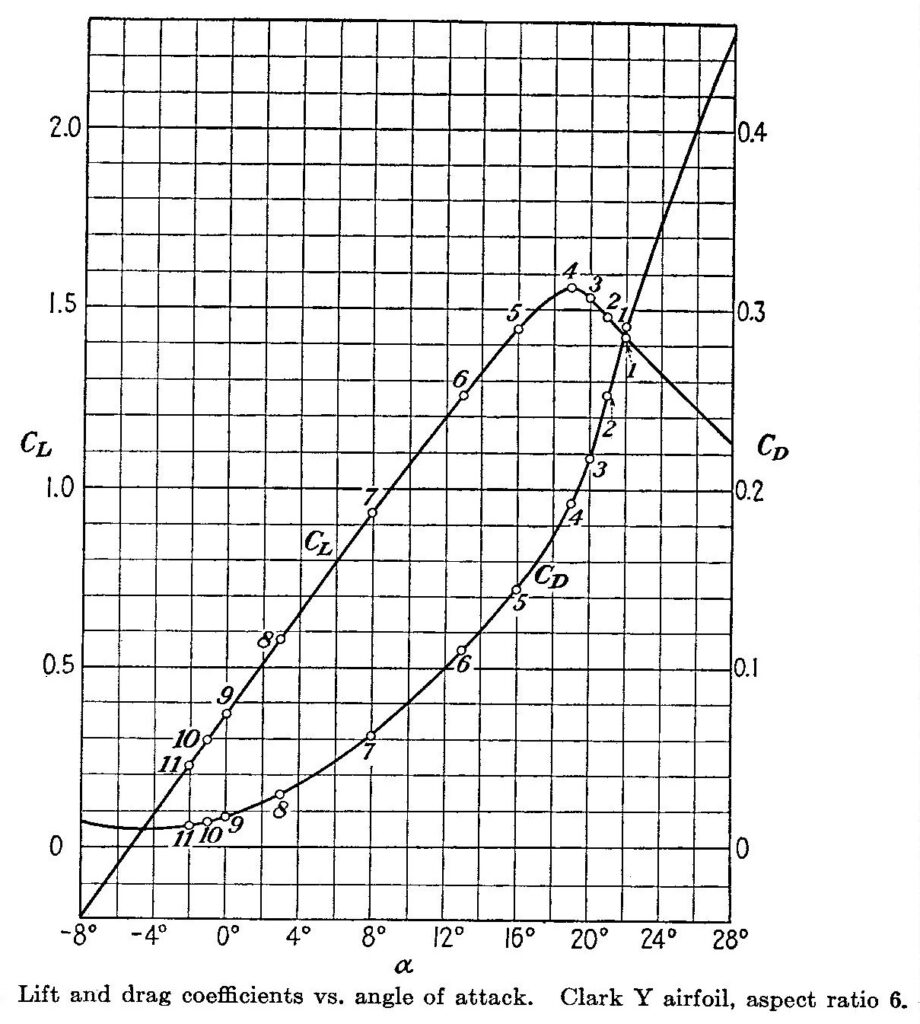
It also fails to say anything at all about the important drag component of the force. This application of the Bernoulli principle also does not account for the varying pressure distribution over the surface of the airfoil, which the circulation theory does.
Doesn’t Work for Thin Wings
The Bernoulli principle also does not work for a flat plate or thin cambered wing, where the circulation theory does. Many kites have flat airfoils. Many model gliders and airplanes have flat or thin cambered wings where the distance over the top is exactly the same as the distance along the bottom.
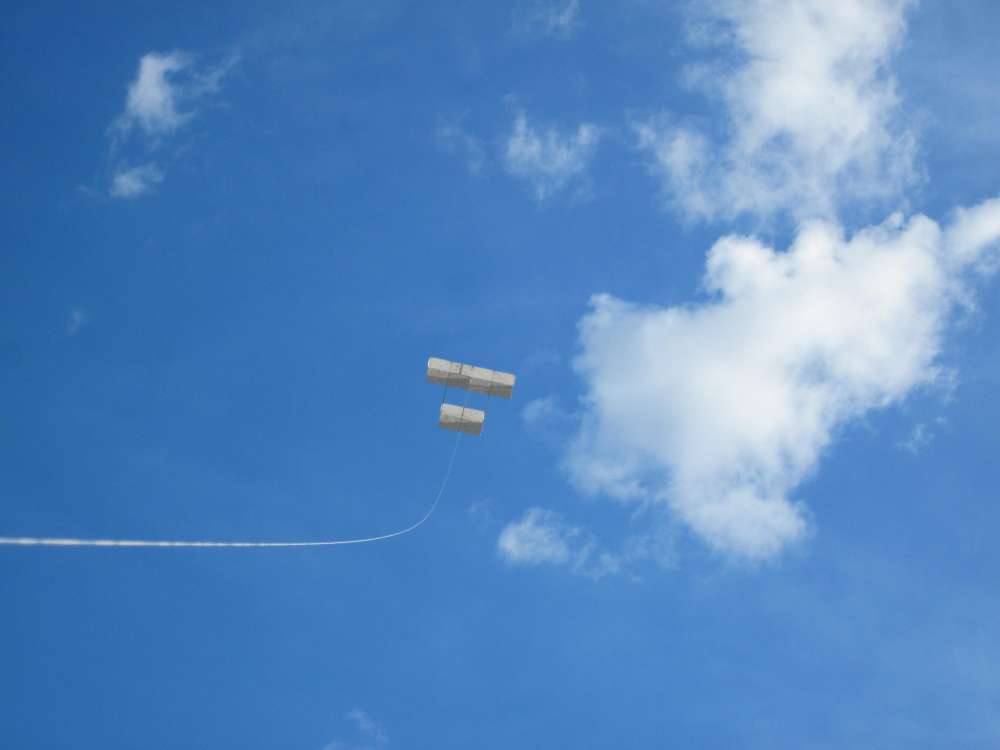
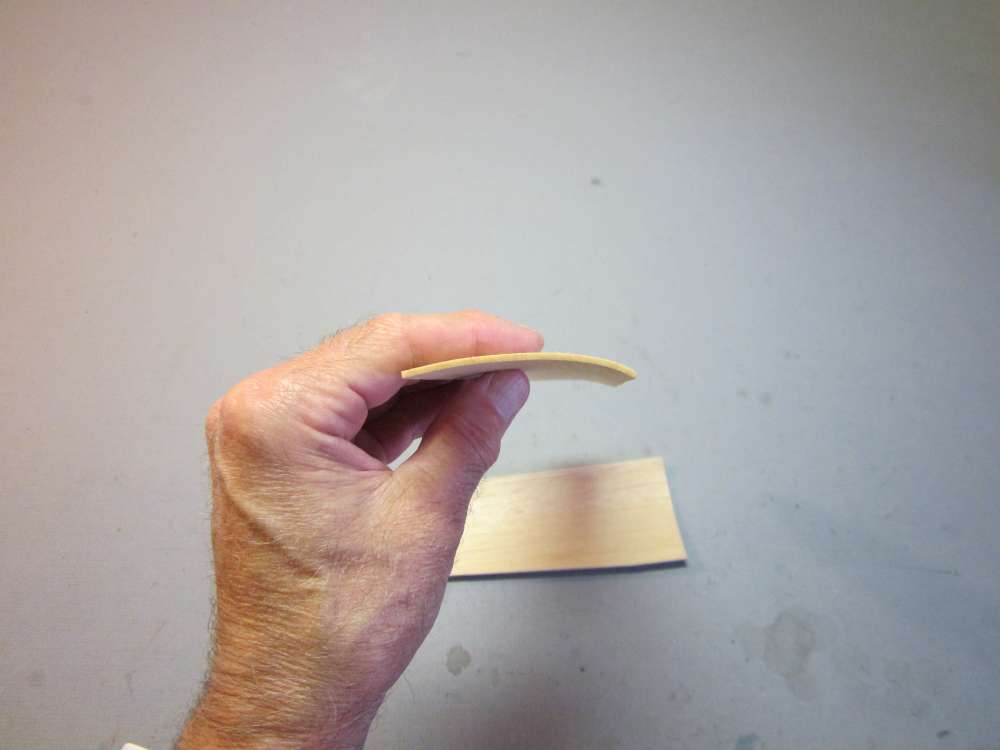
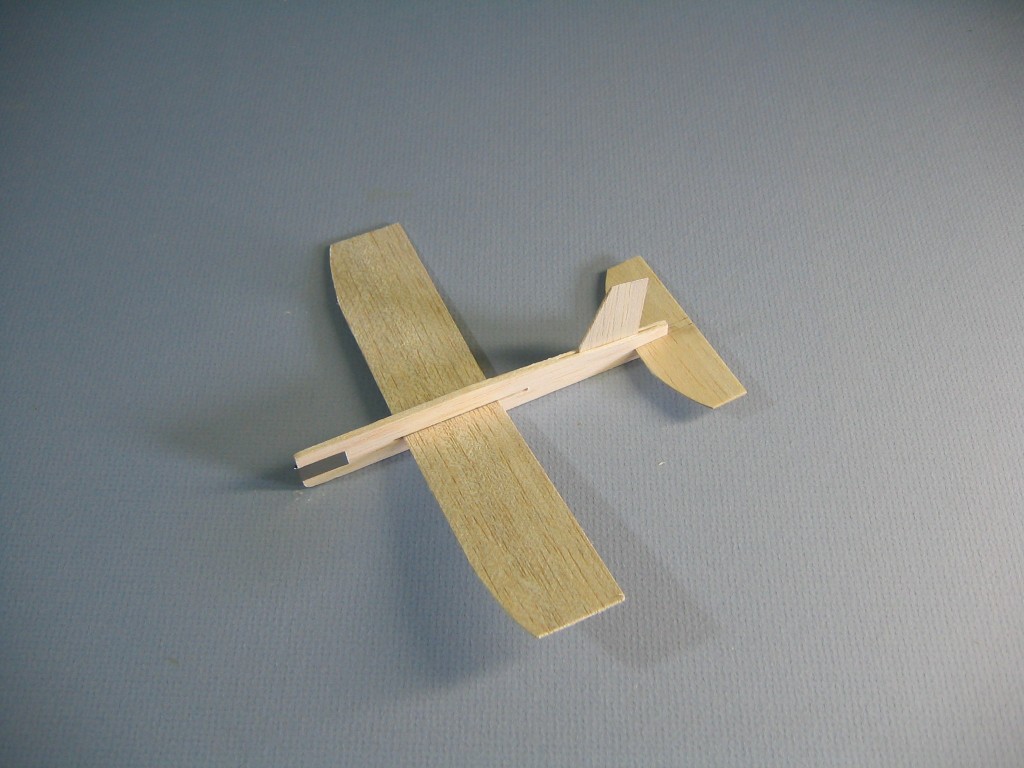
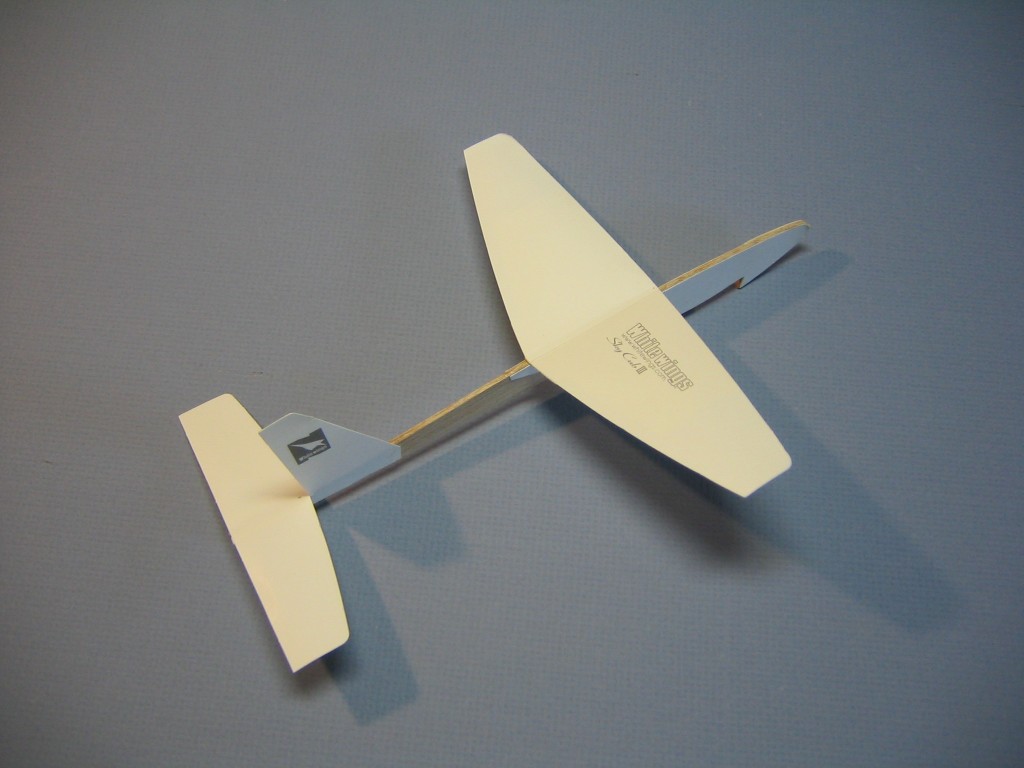
Doesn’t Work for Inverted Flight
It is common for aerobatic planes to fly inverted. If the unequal distance theory was correct, this would not be possible.
A False Demonstration of the Bernoulli Principle
There is a common demonstration of the Bernoulli principle that involves blowing across the top of a strip of paper held horizontally. Initially the paper hangs down in an arc, but when the blowing starts, the paper rises up. It is claimed that according to the Bernoulli principle, where the velocity is high the pressure is low. Therefore the paper moves toward the moving jet of air. This is completely wrong. This is not a valid application of the Bernoulli principle. The Bernoulli principle describes the conditions of air at two different cross sections of the same streamline. It postulates that energy is conserved as the air moves along a streamline, that the total energy is the same at both cross sections. The sum of the pressure energy and the kinetic energy is constant along the streamline, so when one goes up, the other goes down. This is summarized as “When the speed is high, the pressure is low and when the speed is low, the pressure is high.” You can’t apply that summary in a condition which is not consistent with the condition required by the Bernoulli principle. A wing is completely submerged in the air, with air moving above and below. In this demonstration that is not the case, we have a narrow jet of air moving over one surface with static air underneath. If you hold the strip of paper vertically and blow along one side, it does not move toward that side. Something else entirely is going on here.
This is a demonstration of Coanda effect. When the strip of paper is held horizontally the narrow jet of air is entrained on the top surface of a sheet which is hanging down in an arc. When a jet of air moves along an arc, it experiences a centrifugal force which pulls it outward. An entrained jet of air moving within an otherwise still surrounding atmosphere is nothing like a wing moving through the air.
I am late to the conversation, but love the explanation and effort to clarify the problems with the typical classroom explanations of lift. I first became aware of this fallacy back in 2012 and, as a classroom teacher, it has been hard to not let it bug the heck out of me that it is in nearly every curriculum in the nation, including AP Physics. I don’t know if you ever came across this article in Scientific American, but it is an interesting read and in agreement with you about Bernoulli’s Principle and lift (https://drive.google.com/file/d/17-XVermYPCEW8RjvDJM_t5el0WINLG0r/view?usp=sharing), as is this article from NASA pointing toward Euler (https://www1.grc.nasa.gov/beginners-guide-to-aeronautics/bernoulli-and-newton/#which-camp-is-correct-how-is-lift-generated). All in all, it is good to see this
Actually, both of those articles are wrong. Science is a description of phenomena in the natural world derived from careful observation of those phenomena. Neither the “Bernoulli” nor the “Newton” theory matches what we observe. Both are wrong. Each picks a small part of the phenomena that fits their pet theory. Both fail to describe the whole phenomena. In particular, both fail to account for the upwash ahead of the wing. The flow field around the wing section is a combination of two flows; a translational flow and a circulation. This results in an overall flow pattern that arcs over the airfoil. Centrifugal forces produce a pressure distribution that lifts the airfoil. Upwash was observed by Montgomery perhaps as early as 1883, but not published until about 1909. Montgomery failed to appreciate the significance of his observation. Lanchester described the entire flow pattern in a paper presented in 1897, but not published because it was inconsistent with the prevailing theories. He referred to it as a standing wave. Prandtl developed his circulation theory of lift from Lanchester’s work, but this is an abstract mathematical theory based on postulates of ideal fluids which fits observed phenomena only in places, but fails to account for the entire phenomena. In particular, it fails to account for all of the drag and it fails to account for the value of the circulation. Real fluids are molecular and molecules are subject to Brownian motion. It is this that accounts for the formation of circulation.
”If you hold the strip of paper vertically and blow along one side, it does not move toward that side.”
Rubbish. The laws of physics must work differently for me! A phenomenon which you do not illustrate in your video for some reason!
Unfortunately my video did not catch the case of the vertical paper, the paper was below the field of view. As I said in the text, when the paper is held vertically and a stream of air is blown vertically down across the surface of the paper, the paper does not rise in the direction of the stream of air. Maybe I should make another video with the vertical case centered in the view.
Hi, yes I hear what you say but why on Earth would Bernoulli or Coanda or whatever work in a horizontal plane but not in a vertical??
In the horizontal condition, the sheet of paper is curved, leading to a centrifugal force. In the vertical condition, the paper is not curved, no force, so the paper does not move.
To me, Bernoulli’s equation is the Bernoulli principle. Pile on other stuff under his name, and it’s libel. 😉 At least use quotes.
Bernoulli has a problem in common with Yogi Berra: “I never said half the things I said.”* Do you have an actual quote or page where Bernoulli says those two particles get to the trailing edge at the same time?
As far as streamlines go, if the two particles were really close to each other, the energy was the same at the start. According to what you’ve written, it should remain the same. I’m not arguing with the latter, because I don’t want to sit down and think that long, especially if you turn out to be right about that part.
Your measurement around the airfoil assumes the stagnation point (where the flow splits) is always at the same point on the leading edge, which just isn’t true. As an airfoil goes to a higher angle of attack, the stagnation point moves down. You can see that in the following video:
https://www.youtube.com/watch?v=6UlsArvbTeo
I haven’t found smoke tunnel images or video for flat plates, but images representing the situation are remarkably similar to those for normal airfoils. In other words, they show displaced stagnation points.
Another issue with your measurement is that it implicitly assumes the flow is at some relatively constant speed. In fact, the air will be a whole lot faster at some places than others. Since the pressure varies inversely proportional to the square of the velocity, the fast and slow places don’t cancel out. I suspect it IS possible to have some weird airfoil which has constant speed over most of it, but I’ve never seen one. Supercritical wings keep the pressure, and therefore velocity, difference below a certain point to avoid Mach effects, or at least ameliorate them, but I suspect that’s a much more complicated story. Not all of the qualifying statements my prof used to make apply. (incompressible, inviscid, irrotational….)
One thing that makes this stuff easier to reconcile is the Kutta condition. That is, the fluid can’t make it around a sharp corner at the back of the airfoil. With infinite ambient pressure, and no viscosity, it could hypothetically do that, but real fluids can’t.
Finally, I was curious so I suspended a paper vertically and blew along it, rather than at it. It moved toward my breath, not away.
This subject is pretty complicated, or can seem so. It’s really easy to convince oneself of things that aren’t true. Or maybe I should say aren’t useful.
*I admit it. I don’t know if this is one of the things he said that he never said, or if he actually said it.
Bernoulli never considered airfoils, the subject did not come up in his time. I am discussing the most popular “explanation” of wing lift, which misuses the Bernoulli equation.
There is nothing that says two particles being close to each other means they have the same energy. You must start with the assumption that they have the same energy. If you assume the mass of air approaching the airfoil moves in unison, it is a reasonable assumption that the energy associated with each streamline is the same. However, the assumption that the two particles must reach the trailing edge at the same time, forcing the top one to go faster, is false, as shown in the video you linked. It actually goes much faster than supposed by the Bernoulli people.
The usual “Bernoulli explanation” does not consider the effect of attack angle nor the varying position of the stagnation point. It simply asserts that the air going over the top must go farther, so must speed up. This principle should apply at any attack angle and any stagnation point. I am showing the absurdity of that concept.
No, it does not assume the flow is at some relatively constant speed. It assumes the velocity over the top is greater than the velocity underneath, in inverse proportion to the path length. The Bernoulli people don’t know anything about the varying velocity around the airfoil. I simply take the Bernoulli people at their word and attempt to apply their concept to an actual airfoil. It doesn’t work. According to the Bernoulli people, a flat plate wing should not be able to fly. We are not dealing with supercritical flow or Mach regimes. Those concepts do not appear in classical fluid dynamics.
As a kid and a powered model airplane builder I always felt there was a huge problem with the low pressure component on top of any airfoil. Many years later I finally understood the lazy thinking that went into most discussions of airfoil lift.
Thank you for your detailed analysis. I thoroughly enjoyed it.
Ken Thrasher